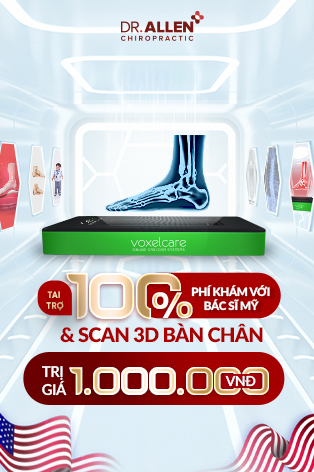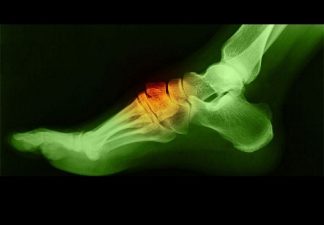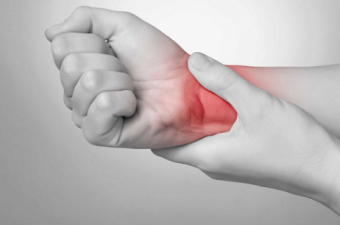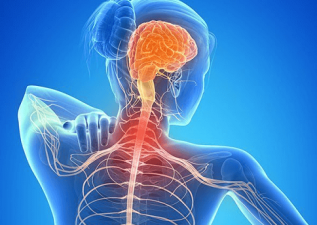A herniated disc in the neck, also known as a cervical herniated disc, occurs when the soft inner core of a spinal disc in the cervical spine protrudes through its outer fibrous layer. This can result in pain, inflammation, and nerve compression, affecting the neck, shoulders, arms, and hands. In this article, we will explore the causes, symptoms, diagnostic tools, and treatment options for herniated discs in the neck, including surgery, physical therapy, and exercises.
What is a Herniated Disc in the Neck?
A herniated disc in the neck involves the cervical spine, which consists of the top seven vertebrae that support the head and neck. These discs serve as shock absorbers between the vertebrae and facilitate movement. When the inner core of the disc protrudes through its outer layer, it can compress nearby nerves or the spinal cord, causing pain and neurological symptoms.
Common levels for cervical herniated discs include:
- C4-C5 herniated disc
- C5-C6 herniated disc
- C6-C7 herniated disc
Symptoms of a Herniated Disc in the Neck
Symptoms of a cervical herniated disc can include:
- Neck pain
- Shoulder and arm pain
- Numbness, tingling, or weakness in the arms and hands
- Reduced range of motion in the neck
- Headaches
Diagnosis of a Herniated Disc in the Neck
A healthcare professional may perform the following tests to diagnose a herniated disc in the neck:
- Physical examination: Assessing the range of motion, muscle strength, and reflexes
- Imaging studies: X-rays, MRI, or CT scans to visualize the cervical spine and identify the location and severity of the herniation
Treatment for Herniated Disc in the Neck
Initial treatment for a cervical herniated disc typically involves conservative measures, such as:
- Medication for pain and inflammation
- Rest and activity modification
- Physical therapy
- Cervical traction
If conservative treatments are unsuccessful or if neurological symptoms worsen, more invasive options may be considered, such as epidural steroid injections or surgery.
Herniated Disc in Neck Surgery
Surgical options for cervical herniated discs include:
- Anterior cervical discectomy and fusion (ACDF): This procedure involves removing the affected disc and fusing the adjacent vertebrae for stability.
- Cervical disc replacement: This involves replacing the damaged disc with an artificial disc to maintain spinal mobility.
Surgery Recovery Time
Recovery time for cervical herniated disc surgery varies depending on the procedure and individual factors. Generally, patients can expect to return to normal activities within 4-6 weeks, with a full recovery taking several months.
Physical Therapy for Herniated Disc in the Neck
Physical therapy plays a crucial role in the treatment and recovery process for individuals with cervical herniated discs. A physical therapist can develop a personalized program that includes:
- Strengthening exercises for the neck and upper back muscles
- Stretching exercises to improve flexibility and range of motion
- Posture and body mechanics education to reduce strain on the cervical spine
Exercises for Herniated Disc in the Neck
Some exercises that may be recommended for individuals with cervical herniated discs include:
- Neck stretches: Gently tilt your head from side to side and forward and backward, holding each stretch for 15-30 seconds.
- Isometric exercises: Press your hand against your forehead or the side of your head while resisting with your neck muscles.
- Hold for 5 seconds and repeat 5 times in each direction.
- Shoulder rolls: Roll your shoulders forward and backward in a circular motion to promote mobility and relieve tension.
- Repeat 10 times in each direction.
How to Sleep with a Herniated Disc in the Neck
Proper sleep positioning is essential for individuals with cervical herniated discs. Consider the following tips for a more comfortable night’s sleep:
- Use a cervical pillow or rolled towel to support the natural curve of your neck.
- Sleep on your back or side, as stomach sleeping can strain the neck.
- Avoid using multiple pillows, which can force the neck into unnatural positions.
Lifting Weights with a Herniated Disc in the Neck
Consult with a healthcare professional before lifting weights or engaging in strenuous activities if you have a cervical herniated disc. If cleared for exercise, use proper form and avoid exercises that involve excessive neck strain or risk of injury. Gradually progress in weight and intensity, and stop immediately if you experience pain or discomfort.
Long-Term Effects of a Herniated Disc in the Neck
If left untreated, a cervical herniated disc can lead to long-term complications, including:
- Chronic pain and reduced mobility in the neck, shoulders, and arms
- Muscle weakness and atrophy
- Loss of sensation and impaired function in the arms and hands
- In severe cases, spinal cord compression, which can cause paralysis or loss of bladder and bowel control
Conclusion
A herniated disc in the neck can cause a range of symptoms and impact daily life. Early diagnosis and appropriate treatment, including conservative measures like medication, rest, and physical therapy, can help manage symptoms and promote healing. In more severe cases, surgical intervention may be necessary. By working closely with healthcare professionals and following a personalized treatment plan, individuals with cervical herniated discs can improve their condition and work towards long-term pain relief and recovery.











